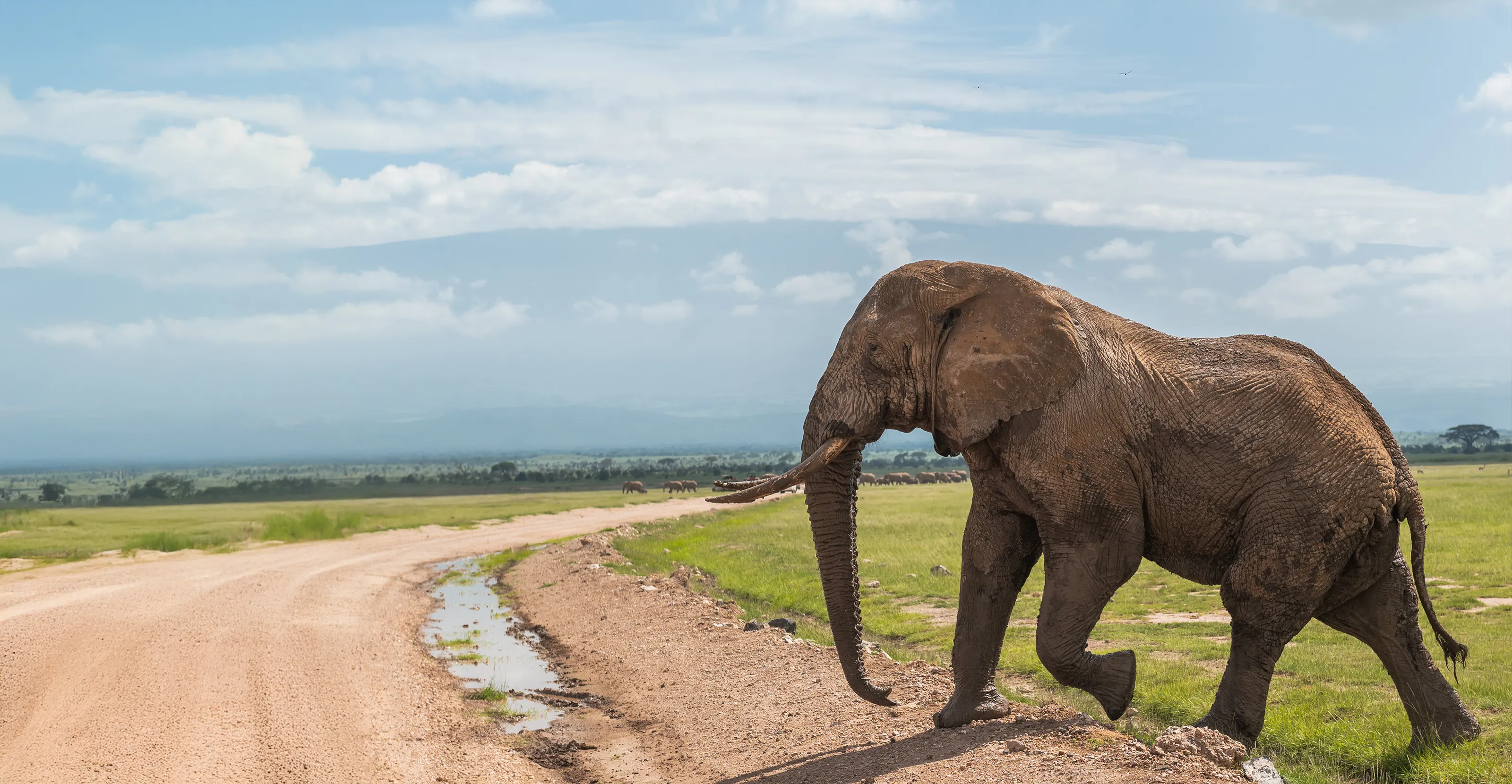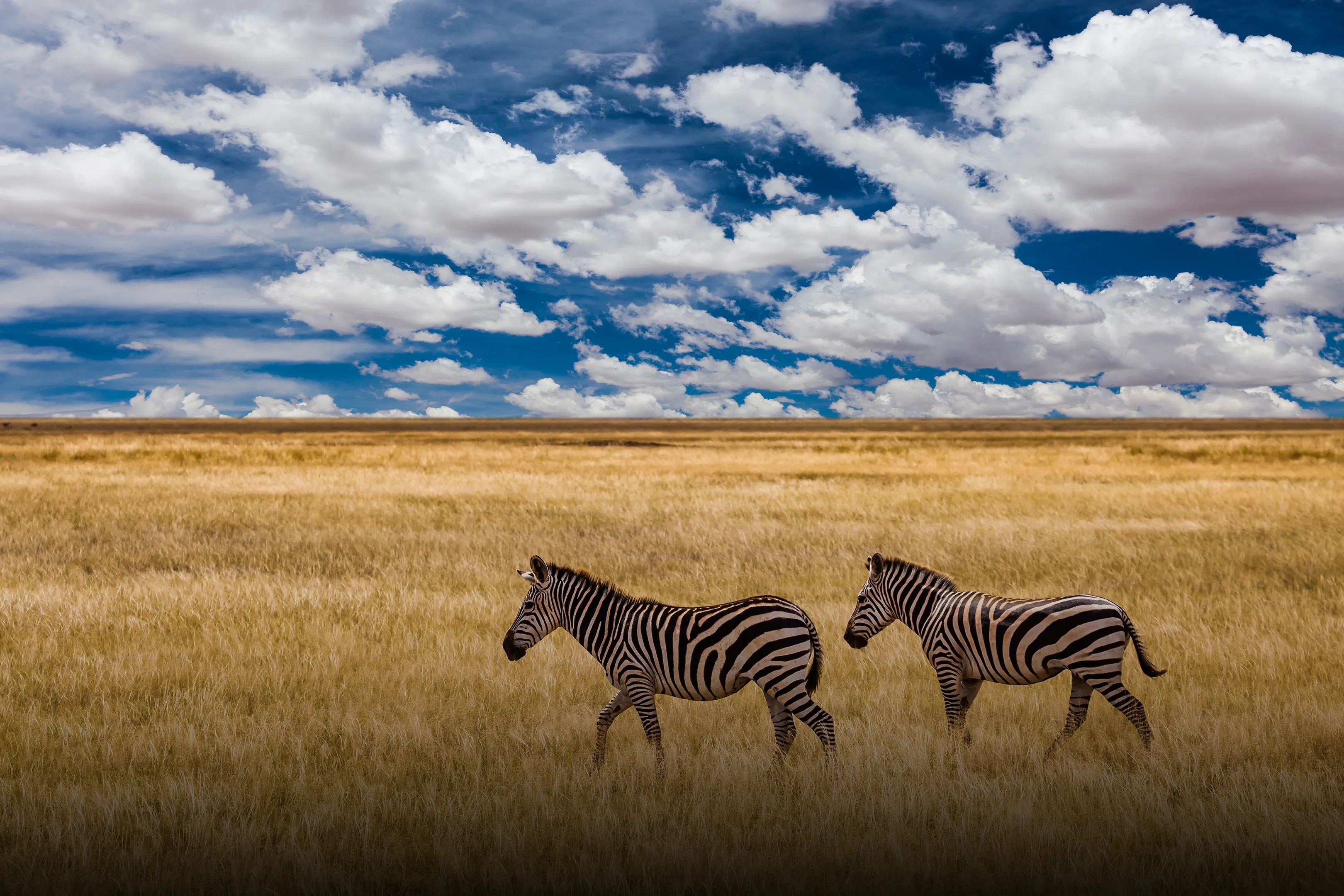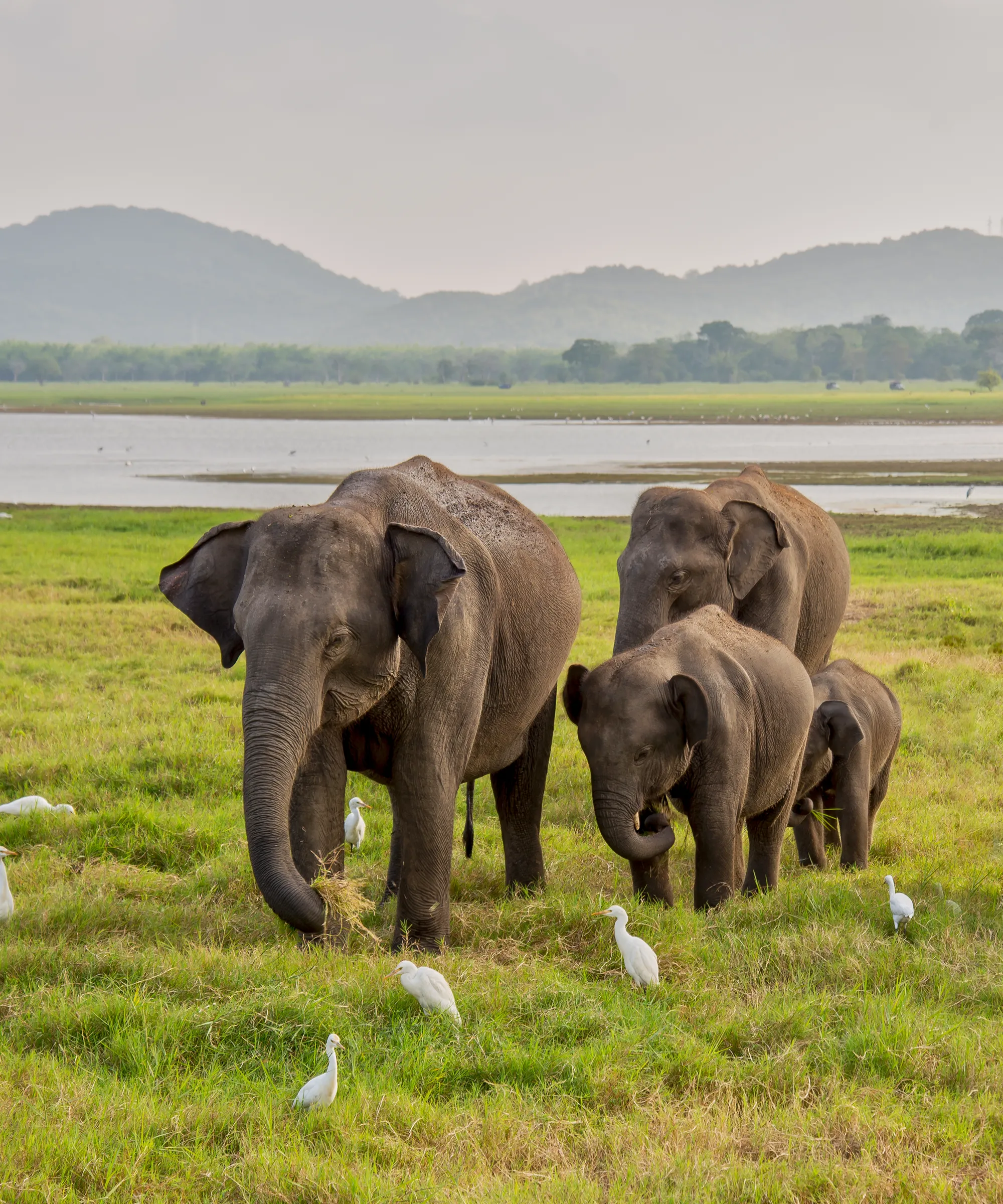





Amboseli National Park, located in southern Kenya near the Tanzania border, is renowned for its massive elephant herds and stunning views of Mount Kilimanjaro. Spanning 392 square kilometres, it forms part of a larger transboundary ecosystem rich in wildlife.
Its unique landscape blends dusty plains with lush swamps nourished by underground streams flowing from Kilimanjaro’s glaciers. This rare combination supports an abundance of animals, including elephants, buffaloes, hippos, and over 400 bird species throughout the year.
Amboseli is renowned for its expansive horizons, open skies, and dramatic contrasts that shift with the seasons.

Visitors can enjoy exceptional wildlife viewing while experiencing cultural encounters with the Maasai people, who have long lived in harmony with the land. From scenic backdrops to close animal encounters, the park offers an enriching experience in the heart of East Africa.

Amboseli National Park, Kenya
2.6527° S, 37.2606° E

The best time to visit Amboseli is during the dry seasons—June to October and January to February—for clear skies and outstanding wildlife.
Early mornings and late afternoons often provide the best chances to see Mount Kilimanjaro without cloud cover.
Fly into Jomo Kenyatta International Airport in Nairobi, then drive about 4 hours to Amboseli via Emali to Iremito Gate.
Alternatively, take a train to Emali station and arrange a vehicle transfer directly to the park’s entrance gate.
Amboseli experiences warm days and cooler nights year-round. Daytime temperatures average 28°C, while nights cool to around 15°C.
Rain is most common from November to May, while the dry months from June to October bring clearer skies and better conditions.
Amboseli offers incredible game drives, both guided and self-drive, across open plains filled with elephants and big cats.
Visitors can also enjoy hot-air balloon rides or hike up Observation Hill for sweeping views of wildlife and Mount Kilimanjaro.














Understand the factors that influence safari prices, including park fees, accommodation, and travel seasons in Kenya.
Learn More
Discover the entry requirements, visa types, and straightforward application process for your Kenya tourist visa.
Learn More
Discover Kenya’s diverse local cuisine, featuring dishes such as nyama choma, ugali, samosas, and fresh tropical fruits.
Learn More
Get a practical list of what to pack for comfort, safety, and style on Kenyan safaris.
Learn More
From wildlife safaris to coastal escapes, discover Kenya’s top activities and experiences for every traveller.
Learn MoreThe best time to visit Kenya is during the dry season, which runs from June to September. During these months, the grass is low, water sources are limited, and animals gather in open areas—making them easier to spot on game drives.
Temperatures are mild, skies are clear, and there’s excellent visibility for wildlife photography. It’s also the prime season to witness the Great Wildebeest Migration in the Masai Mara, especially from July to early October, when herds cross from Tanzania’s Serengeti into Kenya.
A well-thought-out Kenya safari packing list ensures comfort, protection, and convenience. Pack neutral-colored clothing, such as khaki or beige, to blend in with the environment and minimize the risk of attracting insects. Include long-sleeved shirts, lightweight trousers, a wide-brimmed hat, and a fleece for chilly mornings.
Don’t forget sunscreen, insect repellent, sunglasses, and binoculars. Most safari flights have baggage restrictions, so soft-sided bags are preferred. If you're visiting during the rainy season (March to May or October to November), include a light raincoat or poncho.
The cost of a Kenya safari depends on several factors, including the season, accommodation type, park entrance fees, and level of luxury. On average, travelers spend between $250 and $ 1,000 per person per day on a private safari package.
Budget safaris with basic lodges are less expensive, while high-end lodges and fly-in safaris tend to increase the price. Costs typically include transport, park fees, meals, game drives, and guide services. Extras, such as balloon rides or cultural visits, may be charged separately.
There are numerous activities to enjoy in Kenya beyond traditional game drives. Wildlife safaris in the Masai Mara, Amboseli, and Lake Nakuru are a must, offering the chance to see the Big Five and other unique animals.
Other activities include hot air balloon rides, guided nature walks, birdwatching, and visits to the David Sheldrick Elephant Orphanage or Giraffe Centre in Nairobi. For a change of scenery, relax on Kenya’s beautiful beaches in Mombasa or Diani.
Kenya is home to several world-renowned national parks and reserves. The most popular Kenya safari parks include the Masai Mara Game Reserve, famous for the Great Migration, and Amboseli National Park, known for its elephant herds and views of Mount Kilimanjaro.
Other top destinations include Tsavo East and West, Lake Nakuru National Park, renowned for its flamingos and rhinos, and the Samburu National Reserve, which is home to rare species. Each park offers a unique ecosystem and wildlife experience, making Kenya a diverse safari destination.
To truly enjoy a safari, plan for at least 3 to 4 nights at each lodge or park. A full day allows for two game drives—one in the morning and another in the late afternoon—when animals are most active.
A comprehensive Kenya safari itinerary typically spans 7 to 10 days, encompassing two or three national parks. This gives you time to enjoy different landscapes, wildlife, and lodge experiences without feeling rushed. It also increases your chances of seeing all the animals on your wishlist.
Yes, Kenya is safe for safari travel, especially when you go with a reputable tour operator. Most lodges and camps are situated in remote areas, far from urban concerns, and they maintain strict safety protocols for their guests.
You’ll be accompanied by professional guides and supported by local staff throughout your trip. For health safety, it’s recommended to take malaria prophylaxis and get a yellow fever vaccination. Staying informed and traveling with a trusted provider ensures a worry-free experience.
“It starts with your ideas. We turn them into an authentic safari filled with wonder, freedom, and wild beauty.”
